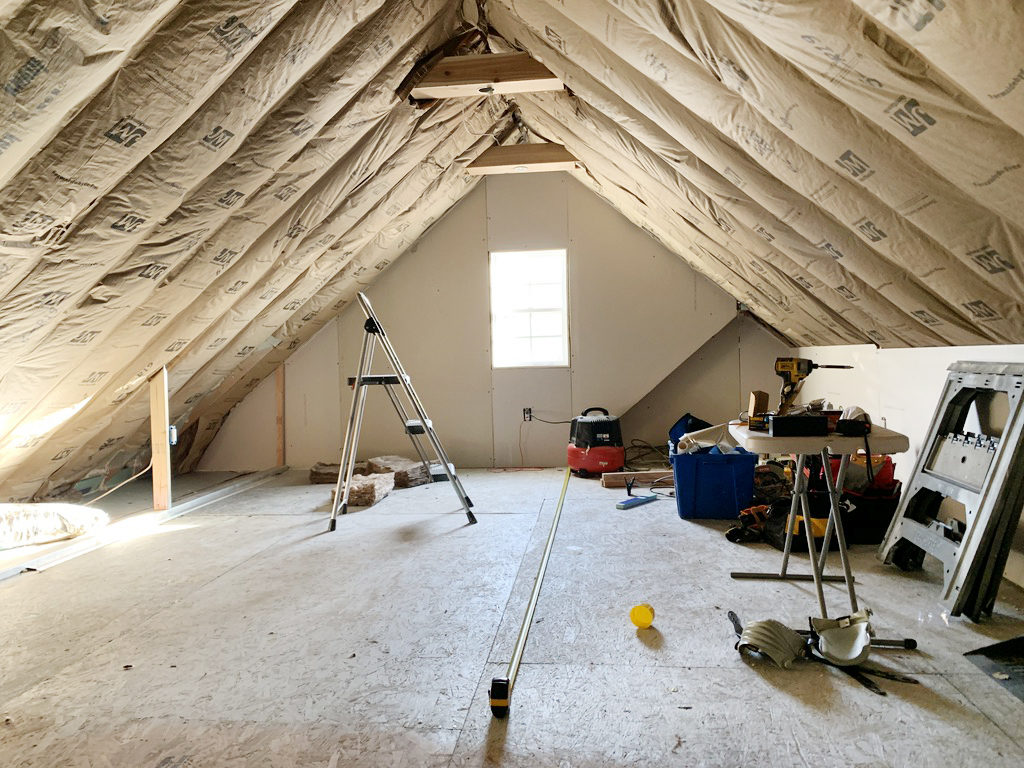In the realm of home improvement, few projects offer as many benefits as insulating the garage ceiling under the bedroom. By enhancing comfort, reducing energy costs, and minimizing noise transmission, this renovation can significantly improve the livability of your home. In this article, we’ll explore the process, benefits, and considerations of insulating the garage ceiling under the bedroom, helping you create a more comfortable and efficient living space.

Understanding the Importance of Insulation
Temperature Regulation
Insulating the garage ceiling under the bedroom plays a crucial role in regulating indoor temperatures. By preventing heat loss in the winter and heat gain in the summer, insulation helps maintain a comfortable environment year-round. This is especially important for bedrooms located above unconditioned spaces like garages, where temperature fluctuations can be more pronounced.
In addition to improving comfort, insulation can lead to significant energy savings. By reducing the workload on your heating and cooling systems, insulating the garage ceiling under the bedroom can lower your utility bills and decrease your home’s carbon footprint. This makes it a cost-effective and environmentally friendly investment in the long run.
Noise Reduction
Another benefit of insulating the garage ceiling under the bedroom is noise reduction. Garages can be noisy environments, with sounds from vehicles, tools, and other activities penetrating through the ceiling into the living space above. By adding insulation, you can dampen these noises and create a quieter, more peaceful bedroom environment.
The Insulation Process
Assessment and Planning
Before beginning the insulation project, it’s essential to assess the existing conditions and plan accordingly. This may involve inspecting the garage ceiling for any signs of damage or deterioration, determining the type and amount of insulation needed, and considering any potential obstacles, such as wiring or plumbing.
Material Selection
When selecting insulation materials for the garage ceiling, there are several options to choose from, including fiberglass batts, spray foam, and rigid foam boards. Each type of insulation has its pros and cons in terms of cost, R-value, and ease of installation, so it’s essential to weigh these factors carefully before making a decision.
Installation
Once you’ve chosen the insulation material, it’s time to begin the installation process. This typically involves cutting the insulation to size, fitting it between the ceiling joists or rafters, and securing it in place using staples, nails, or adhesive. It’s crucial to follow manufacturer guidelines and local building codes to ensure proper installation and maximum effectiveness.
Considerations and Tips
Ventilation
Proper ventilation is essential when insulating the garage ceiling under the bedroom to prevent moisture buildup and maintain indoor air quality. This may involve installing vents or fans to allow for air circulation and moisture removal.
Fire Safety
When installing insulation in the garage ceiling, it’s essential to consider fire safety regulations and take appropriate precautions. This may include using fire-resistant insulation materials and maintaining clearances around heat-producing appliances, such as water heaters or furnaces.
Professional Assistance
While insulating the garage ceiling under the bedroom is a relatively straightforward DIY project for experienced homeowners, it may be wise to seek professional assistance, especially if you’re unsure about any aspect of the process. A qualified contractor can provide expert guidance and ensure that the insulation is installed correctly and safely.
Conclusion
Insulating the garage ceiling under the bedroom is a home improvement project that offers numerous benefits, from improved comfort and energy efficiency to noise reduction and increased property value. By following the proper steps and considerations outlined in this article, you can transform your living space into a more comfortable and enjoyable environment for years to come.